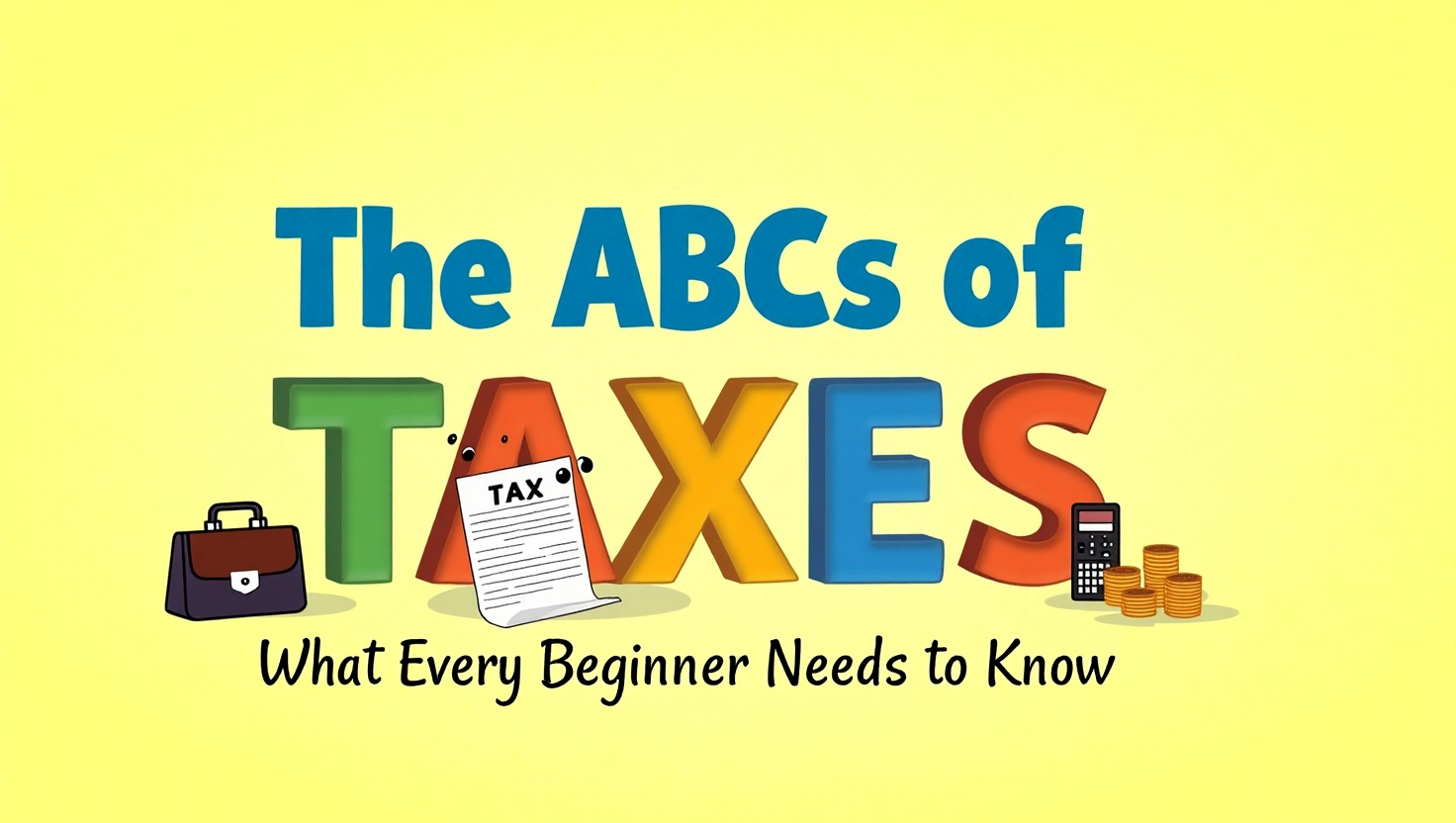A simple guide to understanding how taxes work, why they matter, and how to stay on top of them
For many people, taxes are the financial equivalent of a mystery novel—filled with complex forms, unfamiliar acronyms, and plenty of suspense. But here’s the truth: understanding the basics of taxes doesn’t require an accounting degree or a calculator the size of your head. With a bit of guidance, even first-timers can feel more confident navigating tax season.
Whether you’re starting your first job, freelancing, or just trying to make sense of your paycheck, this guide breaks down the essential building blocks of taxes. Let’s decode the jargon and help you stay on the right side of the IRS—or your local tax authority.
A is for “Annual Income” — And What You Owe On It
Taxes are based on the money you earn throughout the year. This includes your salary or wages, yes, but also:
- Freelance or gig income
- Tips and bonuses
- Rental income
- Investment earnings (interest, dividends, capital gains)
This total income is called your gross income. But before you panic about how much tax you’ll pay on all of it, here’s the good news: not all of it is taxable.
B is for “Brackets” — How Tax Rates Work
The U.S. tax system (and many others) uses a progressive tax system. That means you pay different tax rates on different chunks of your income. These chunks are called tax brackets.
Here’s an example using simplified numbers:
- The first $10,000 might be taxed at 10%
- The next $20,000 at 12%
- The next $30,000 at 22%, and so on
You don’t pay 22% on all your income if you fall into the 22% bracket—just on the portion that falls within that range.
Understanding brackets can help reduce anxiety and highlight why deductions and credits matter so much (more on that next).
C is for “Credits and Deductions” — Your Tax-Time Best Friends
These are the tools that reduce how much tax you actually owe.
- Deductions lower your taxable income. For example, if you earned $50,000 and claimed $12,000 in deductions, you’d be taxed on $38,000.
- Common deductions: student loan interest, mortgage interest, retirement contributions, charitable donations
- Credits directly reduce your tax bill. If you owe $2,000 and have a $500 tax credit, you now owe $1,500.
- Common credits: Earned Income Tax Credit (EITC), Child Tax Credit, education credits
You can take a standard deduction (a flat amount set by the government) or itemize your deductions if they add up to more. Most beginners go with the standard deduction—it’s simpler and often saves more.
D is for “Do-It-Yourself or Get Help?”
Today, filing your taxes doesn’t have to mean piles of paperwork. You’ve got options:
- Tax software (like TurboTax, H&R Block, FreeTaxUSA): Great for straightforward returns. Many offer free versions for low-to-moderate incomes.
- Professional tax preparers or CPAs: Ideal if you’re self-employed, own a business, or have complex finances.
- IRS Free File (in the U.S.): Available if your income falls below a certain threshold.
The earlier you start preparing, the better—especially if you’re owed a refund.
E is for “Estimated Taxes” — If You’re Freelancing or Side Hustling
If you’re earning income that doesn’t have taxes automatically withheld (like freelance work or selling products online), you’re responsible for paying estimated taxes quarterly.
Yes, that means sending money to the government before the year is even over. It’s essential to track your income and set aside a portion (usually 25–30%) for taxes.
Skipping this can lead to penalties and a big surprise come tax time.
F is for “Forms” — What You’ll Need
There are a few key forms to know:
- W-2 – Given by your employer, shows how much you earned and how much was withheld
- 1099-NEC or 1099-MISC – For freelance or contract income
- 1098-T – For education-related payments
- 1098-E – For student loan interest paid
- Form 1040 – The main tax return you’ll file (in the U.S.)
Always keep your forms organized and stored safely. Scanning them into a secure cloud folder helps for easy access later.
G is for “Getting a Refund (or Not)”
If you had too much tax withheld from your paycheck, you’ll get a refund. If too little was withheld, you’ll owe.
Many people love getting refunds, but in reality, it means you gave the government an interest-free loan. Want a bigger paycheck now? You can adjust your withholding using a W-4 form.
Final Tips for Tax Beginners:
- Keep records: Receipts, donations, invoices, and mileage logs matter.
- Watch deadlines: In the U.S., Tax Day is usually around April 15.
- Don’t ignore notices: If the IRS sends a letter, open it. It could be minor—or time-sensitive.
- Avoid scams: The IRS doesn’t call, text, or email you first. Real notices come by mail.
Conclusion: You’ve Got This
Taxes can feel intimidating at first—but they don’t have to be. Once you understand the core concepts, filing becomes less about fear and more about routine. The key is to stay informed, stay organized, and ask for help when you need it.
Just like brushing your teeth or paying rent, taxes are a part of adulting. And with the right tools and mindset, you can handle them like a pro.





